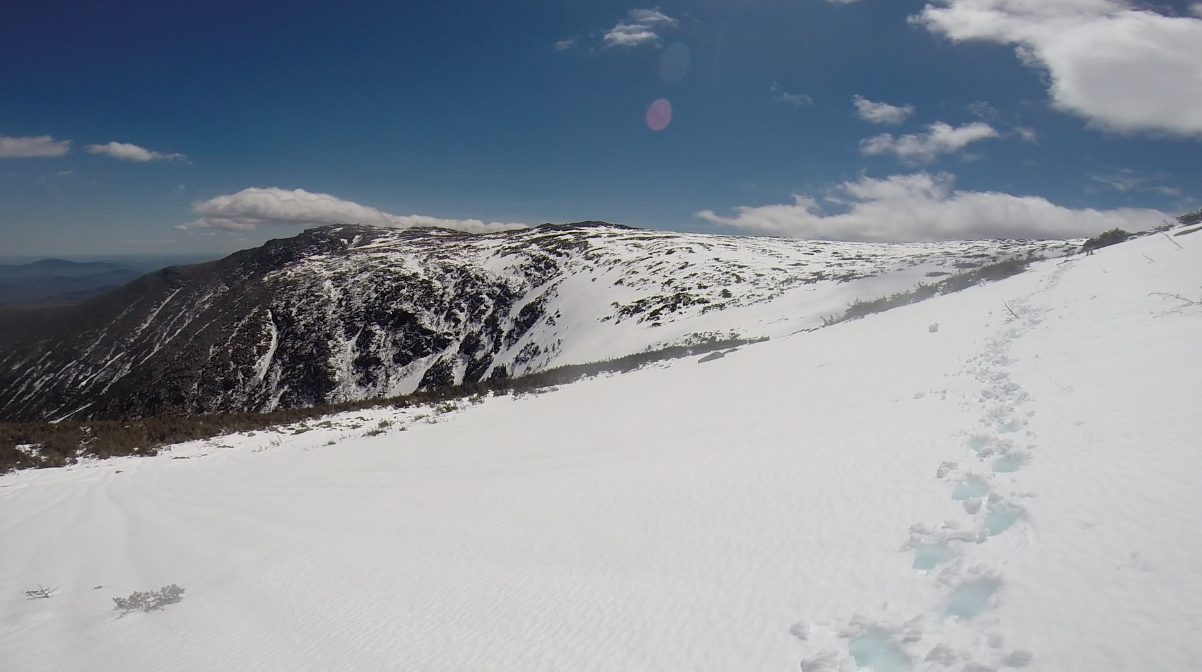
Mount Washington
C4KC Team Successfully Summits Mount Washington, NH on May 16th, 2017 for Shelby, who was diagnosed with a rare type of kidney cancer. We climbed for her and for all rare types of kidney cancer. Read more about her story
Mount Washington is the highest point in the Northeast United States and widely regarded as having the world’s worst weather. At 6,288.2 ft (1,916.6 m) it is not as high as some mountains, but the wind, cold and weather conditions can make it brutal and more than 150 people have died on this mountain. In fact, wind speeds of 232 mile per hour have been clocked on this mountain and on average every third day.
Our route is marked on the 3-D model below. We took the Lions Head Trail.
Since we were planning to climb in Mt. Washington in the middle of May, we expected milder conditions. Here is a picture of typical winter conditions.
The day before our attempt, 2 feet of snow fell on the mountain. So our originally planned route up the Pinnacle Buttress had to be scrapped because of serious avalanche danger. This sign was a reminder that we were about to enter a hostile winter environment in the late spring, while it was in the 80’s in Minnesota!
Temps started off in the 40’s to 50’s and with packs and climbing uphill, we only needed short sleeve shirts. The sun was bright and on the upper slopes the temperatures were just above freezing, so the freshly fallen snow was softening. This would prove to be a tremendous challenge.
At about 3,000 feet we encountered snow. We still had more than 3000 feet to climb all through snow. Lower down the snow was melting and the runoff waterfalls were awesome, except that in places the frigid water turned our trail into a stream of muddy water.
As we climbed in altitude, the temperature dropped. This image is looking towards the Tuckerman Ravine as we rose up along the Lion’s Head Ridge. The snow was deep and we were the first on this route since the 2 feet of snowfall. It made for difficult going. Sometimes the snow would hold your weight and sometimes you would sink in to your waist and expend considerable energy getting yourself out.
Here is an example of the trail we had to break across a small snowfield on the Lions Head Ridge. We roped up for this one just in case some of the snow started to collapse.
Once we reached the subpeak, we were in a real alpine environment and the snow drifts made the last mile exceedingly difficult. We wanted to give up, but pressed on because we were inspired by so many patients with kidney cancer who don’t give up and keep pushing.
Finally we reached the summit. We were wet from so much exertion and the 60 mph winds were bone chilling. We put on extra layers and tried to dry out our gear and took only a few seconds on the actual summit before seeking shelter behind an electrical shed.
I love this photo, one member of our team, collapsed in exhaustion, hunkering down trying to avoid the wind, one looking off towards the west. Also tired, but resolved. We did it for you Shelby and all others affected by kidney cancers.














